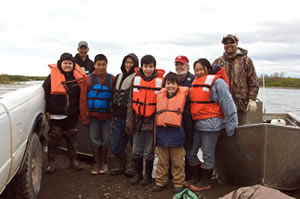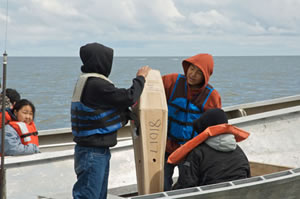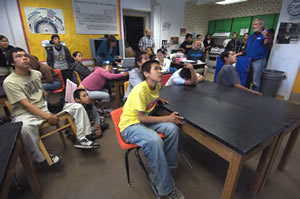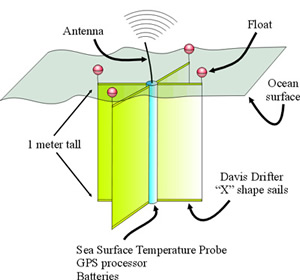Rural students, oceanographers team up for science
Rural students, oceanographers team up for science
Submitted by Carin Bailey Stephens
Phone: 907-322-8730
09/24/08





Schoolchildren from a village on the west coast of Alaska are helping University of Alaska Fairbanks scientists learn where young salmon go when they enter the ocean.
Since June, students from Quinhagak, Alaska, have been sending out buoys that track ocean currents into Kuskokwim Bay. Led by Terry Reeve, UAF’s Marine Advisory Program agent in Bethel, the students have already released 28 buoys and will release four more before the end of September.
The buoys float at the sea’s surface and transmit location information via satellite to oceanographers on the UAF campus. By recording location data every 30 minutes, the buoys help oceanographers determine the ocean currents that carry juvenile salmon from the Kuskokwim River into the coastal waters of the eastern Bering Sea.
Reeve says that the students and administrators at Quinhagak School have been eager to help with the project.
Led by Reeve and Quinhagak resident Warren Jones, the students travel by boat about 15 miles offshore from Quinhagak, where they release the buoys. The students are also learning about the project in the classrooms at Quinhagak School, where they disassemble sample buoys and learn about marine science.
According to Tom Weingartner, principal investigator for the project, many studies of ocean currents have been conducted in the deeper waters of the Bering Sea, but scientists lack information about the shallower waters off Alaska’s west coast.
Weingartner says that ocean currents, tidal motion and winds at the ocean’s surface are critical factors in controlling the currents that may affect the survival of young salmon. By tracking the paths of the drifting buoys, scientists hope to better understand the marine habitat that may influence the highly variable runs of chinook and chum salmon in the Yukon and Kuskokwim River drainages.
The project is funded by the Arctic Yukon Kuskokwim Sustainable Salmon Initiative and will be continued through the summer of 2009.
About SFOS The UAF School of Fisheries and Ocean Sciences conducts world-class marine and fisheries research, education and outreach across Alaska, the Arctic and Antarctic. 55 faculty scientists and 135 students are engaged in building knowledge about Alaska and the world’s coastal and marine ecosystems. SFOS is headquartered at the University of Alaska Fairbanks, and serves the state from facilities located in Seward, Juneau, Anchorage and Kodiak.
Track current drifter buoy data by visiting the project website.


